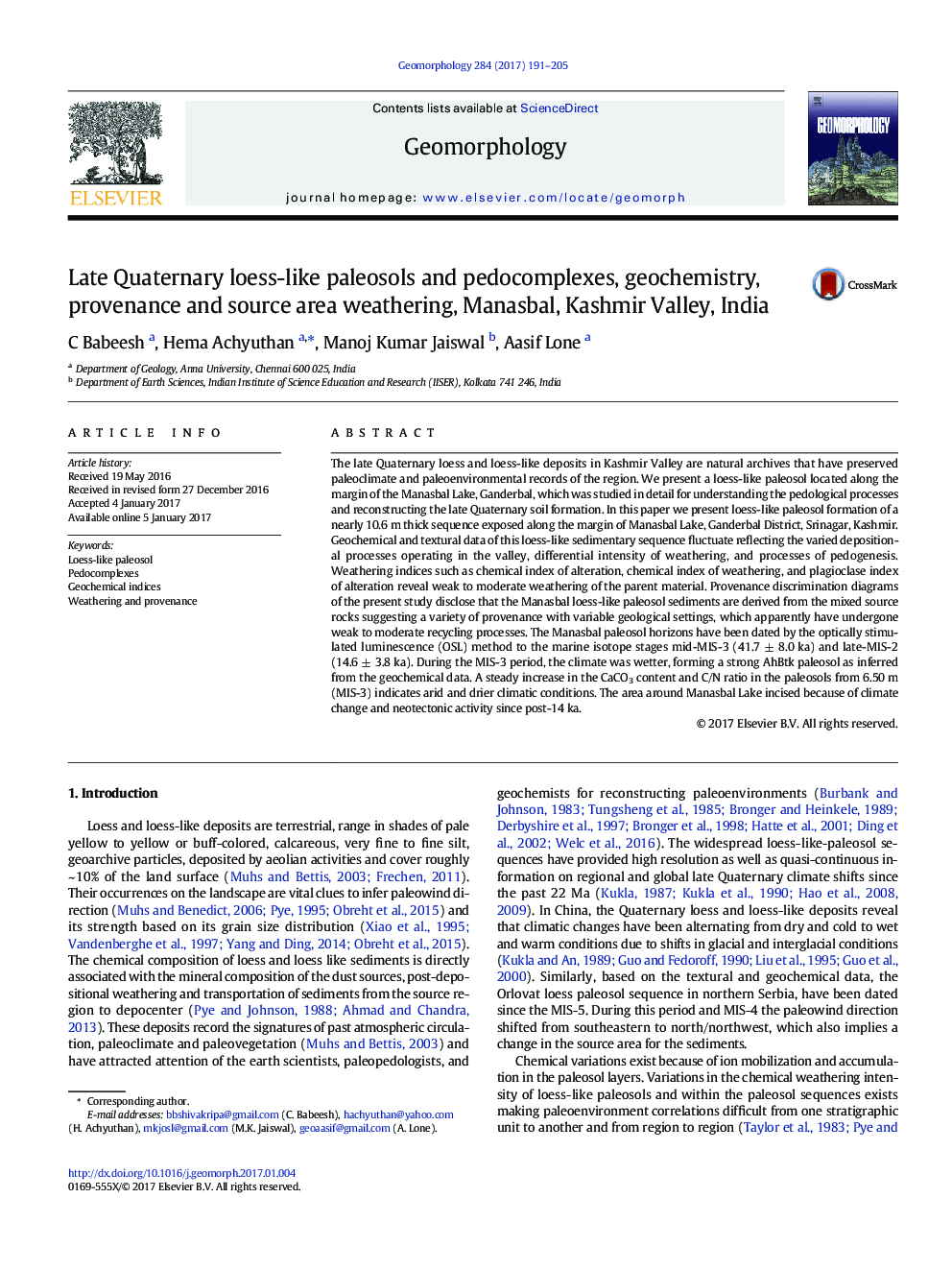| Article ID | Journal | Published Year | Pages | File Type |
|---|---|---|---|---|
| 5781106 | Geomorphology | 2017 | 15 Pages |
The late Quaternary loess and loess-like deposits in Kashmir Valley are natural archives that have preserved paleoclimate and paleoenvironmental records of the region. We present a loess-like paleosol located along the margin of the Manasbal Lake, Ganderbal, which was studied in detail for understanding the pedological processes and reconstructing the late Quaternary soil formation. In this paper we present loess-like paleosol formation of a nearly 10.6 m thick sequence exposed along the margin of Manasbal Lake, Ganderbal District, Srinagar, Kashmir. Geochemical and textural data of this loess-like sedimentary sequence fluctuate reflecting the varied depositional processes operating in the valley, differential intensity of weathering, and processes of pedogenesis. Weathering indices such as chemical index of alteration, chemical index of weathering, and plagioclase index of alteration reveal weak to moderate weathering of the parent material. Provenance discrimination diagrams of the present study disclose that the Manasbal loess-like paleosol sediments are derived from the mixed source rocks suggesting a variety of provenance with variable geological settings, which apparently have undergone weak to moderate recycling processes. The Manasbal paleosol horizons have been dated by the optically stimulated luminescence (OSL) method to the marine isotope stages mid-MIS-3 (41.7 ± 8.0 ka) and late-MIS-2 (14.6 ± 3.8 ka). During the MIS-3 period, the climate was wetter, forming a strong AhBtk paleosol as inferred from the geochemical data. A steady increase in the CaCO3 content and C/N ratio in the paleosols from 6.50 m (MIS-3) indicates arid and drier climatic conditions. The area around Manasbal Lake incised because of climate change and neotectonic activity since post-14 ka.
